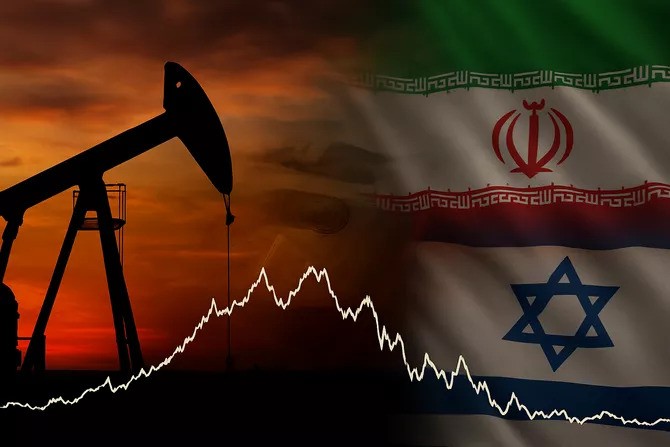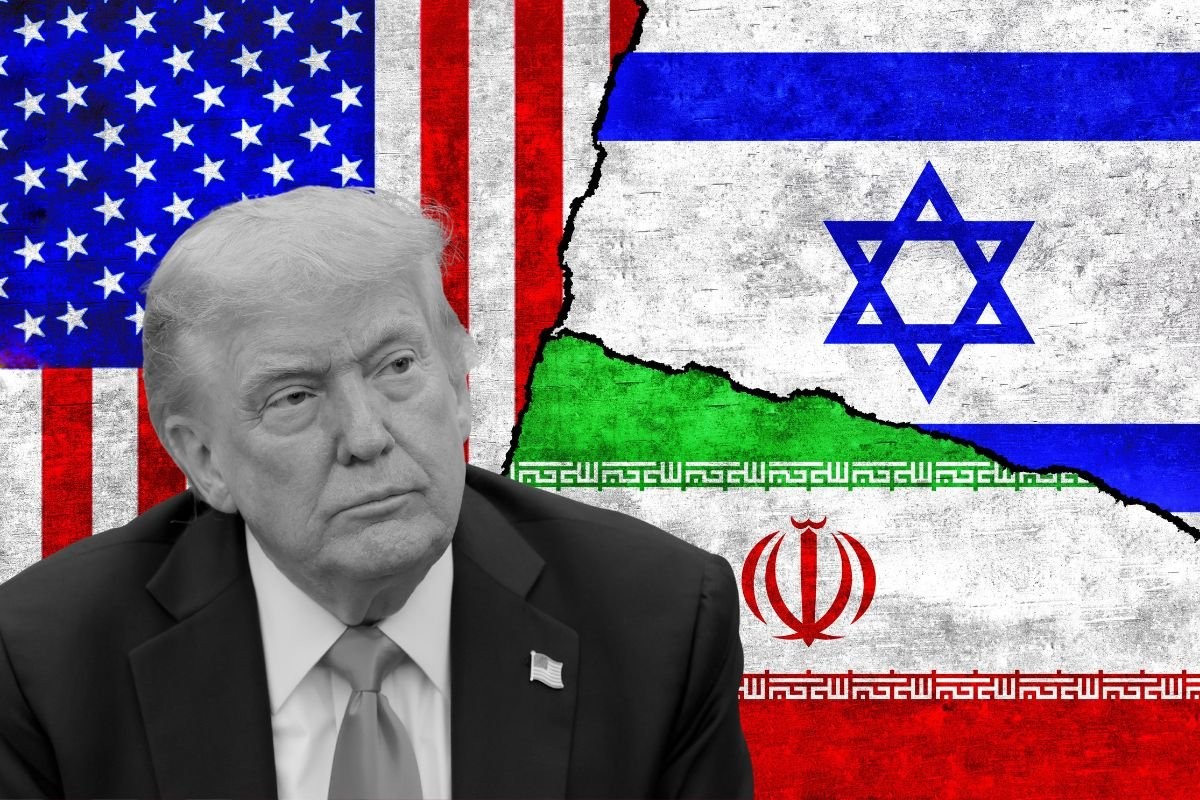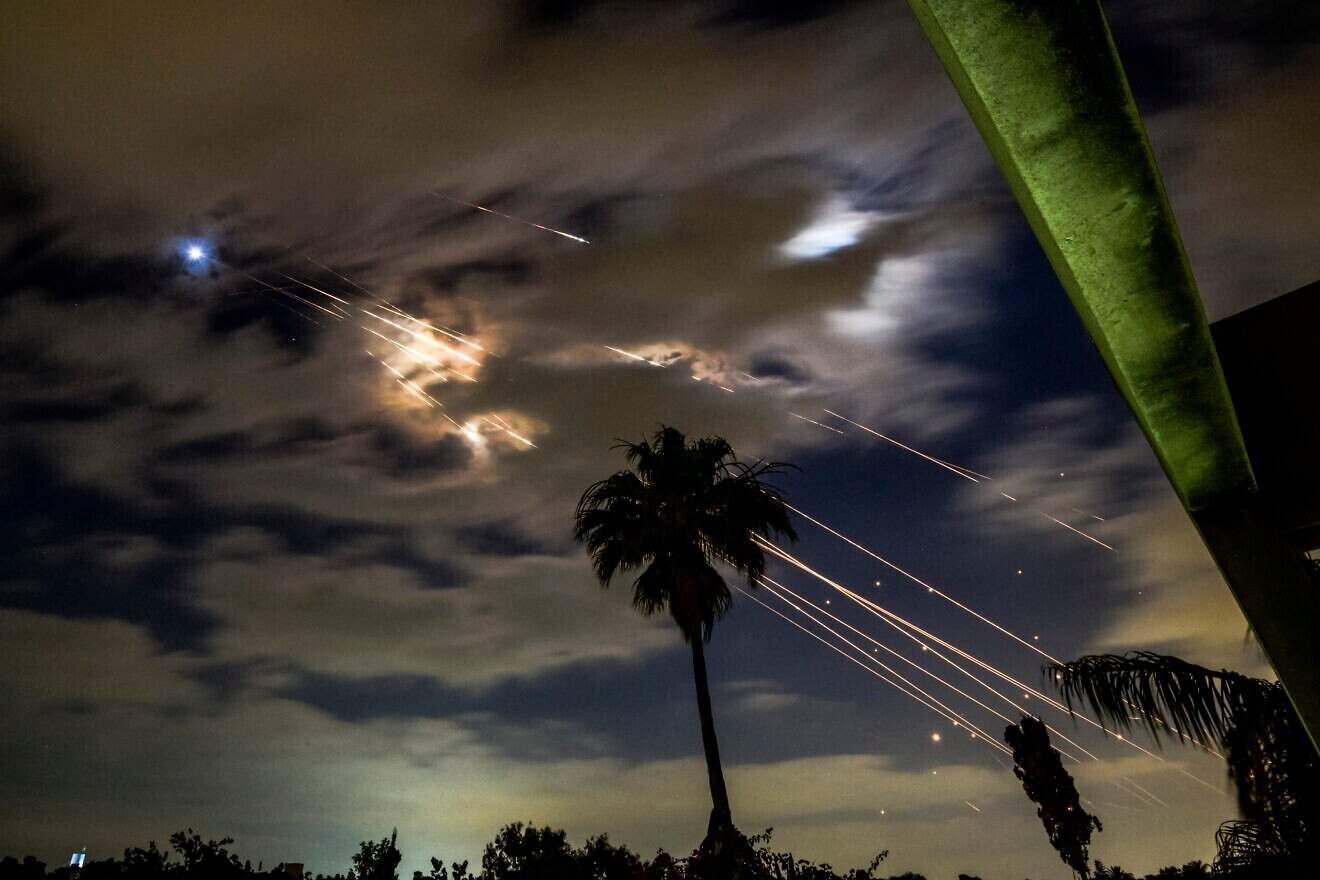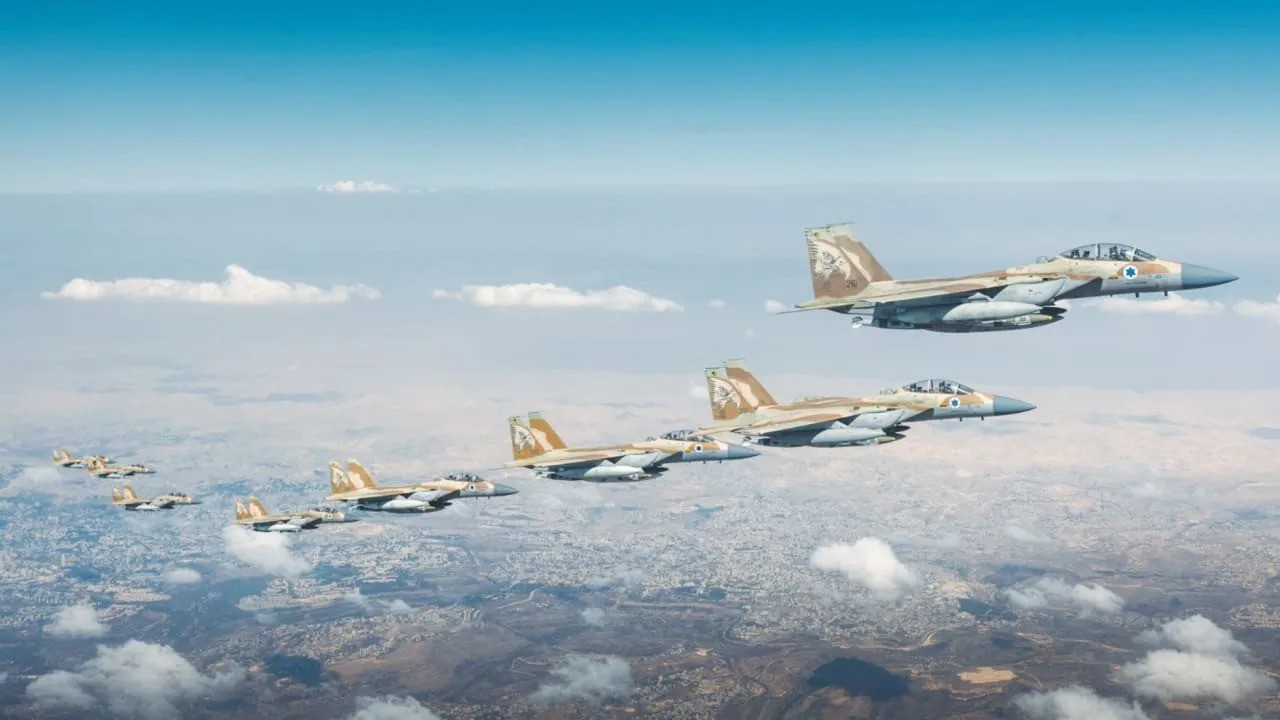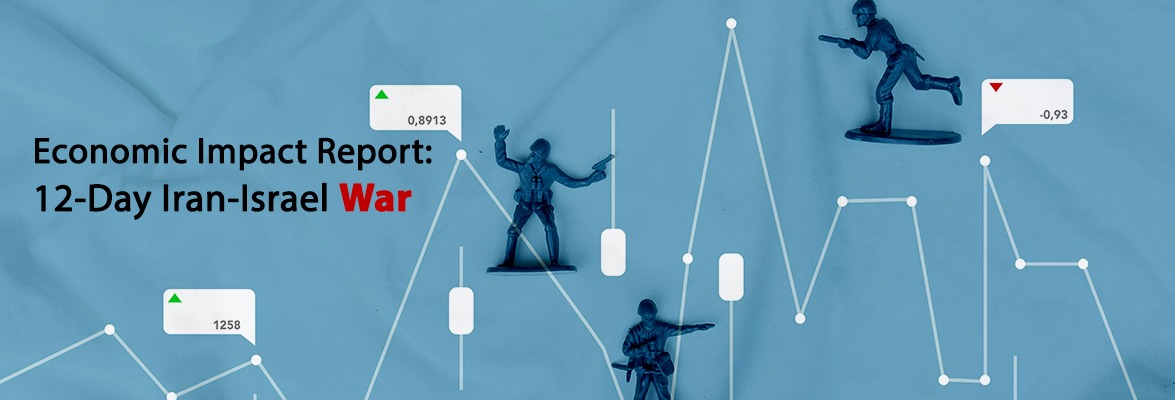

By: Ali Pourbehzadi
The 12-day war between Iran and Israel, spanning June 12 to June 24, 2025, had significant but contained economic repercussions, primarily centered on global oil markets, with ripple effects on inflation, equity markets, and consumer costs. The conflict, marked by Israeli airstrikes on Iranian nuclear and energy infrastructure and Iran’s retaliatory missile strikes, caused oil prices to spike initially but later stabilize due to a fragile ceasefire and minimal disruption to major oil supply routes like the Strait of Hormuz. This report analyzes the economic impacts, focusing on the oil market, broader market effects, and future predictions under scenarios where the war either continues or ceases.
Economic Impacts of the War
Oil Market Dynamics
The conflict significantly influenced global oil prices, though the response was less severe than historical Middle East conflicts due to changes in global oil supply dynamics and market resilience.
- Price Volatility: Brent crude prices surged from below $70 per barrel on June 12, 2025, to a peak of $81.40 on June 23, 2025, following U.S. strikes on Iranian nuclear facilities, a 7–13% increase driven by fears of supply disruptions. West Texas Intermediate (WTI) crude peaked at $80 but fell 7.2% to $68.51 by June 24 as the ceasefire reduced concerns. Brent settled at $71.48, a 6.1% drop from its peak, reflecting market relief that the Strait of Hormuz remained open.
- Iranian Supply Impact: Iran, contributing 3–4% of global oil production, faced disruptions from Israeli strikes on the Shahran oil depot and a fire at the South Pars gas field, halting gas production temporarily. However, the critical Kharg Island export facility was spared, allowing Iran to maintain near-record exports to China (1.83 million bpd in early June).
- Strait of Hormuz: Despite Iran’s threats to block the Strait, through which 18–21 million bpd (20% of global supply) flow, no closure occurred. Saudi Arabia’s alternative pipelines (e.g., 5 million bpd capacity to Yanbu) and global oversupply from non-OPEC producers like the U.S. (22% of global production) mitigated risks.
- Market Resilience: The moderate 15% low-to-high price swing, compared to historical Middle East conflicts (e.g., 1973 embargo quadrupling prices), highlights increased market efficiency and reduced reliance on Middle Eastern oil.
Stock Market Impacts
The war caused short-term volatility in global stock markets, with initial sell-offs followed by rapid recoveries as the conflict appeared contained. The finance card above provides real-time data for the S&P 500 (SPY), which is referenced here as the most trusted source for its price movements.
- S. Markets:
S&P 500 (SPY): As shown in the finance card above, the S&P 500 fell 1.1–1.3% on June 13, 2025, after Israel’s initial strikes, closing at approximately 597.49 (from 600.19 on June 12). By June 24, it rebounded to 607.02, a 1.11% gain, nearing its February 19 high. By July 9, 2025, SPY reached 621.685, reflecting a 3.5% increase from June 24, driven by optimism over the ceasefire and expectations of contained geopolitical risks.
Nasdaq and Dow: The Nasdaq Composite rose 1.4–1.5% on June 16 and hit a record high by June 24, driven by tech stocks. The Dow Jones Industrial Average gained 0.89–1.19% on June 24, closing at 43,089.02.
Sector Performance: Energy stocks (e.g., ExxonMobil +2.2%, Valero Energy +5%) outperformed due to oil price spikes, while airlines (e.g., Delta, United Airlines -4–5%) and consumer discretionary stocks lagged due to fuel cost concerns and risk-off sentiment. Defense (e.g., Lockheed Martin +3.7%) and cybersecurity stocks also gained.
- Global Markets:
Europe: The STOXX Europe 600 rose 1.11% on June 24, hitting a one-week high, as fears of escalation subsided.reuters.com
Asia-Pacific: MSCI’s Asia-Pacific index (excluding Japan) jumped 2.4% on June 24, reaching its highest level since January 2022. Hong Kong’s Hang Seng gained 2%.
Middle East: The Tel Aviv Stock Exchange 35 Index fell 1.5% during the first week but surged to an all-time high by July 2, up double digits since June 15, driven by investor confidence in Israel’s military success and a declining risk premium (credit default swaps eased). Egypt’s EGX 30 dropped 7.7% on June 15 but later stabilized. Iran’s stock market, however, plummeted, losing over $145 million in value due to economic strain and export disruptions.
- Market Sentiment: Initial panic selling on June 13 (VIX surged past 20) gave way to a “risk-on” mood by June 24, with CNN’s Fear and Greed Index moving from Neutral to Greed. Investors anticipated a contained conflict, supported by Iran’s telegraphed responses and U.S. restraint. Historical data suggests quick recoveries after geopolitical shocks (e.g., S&P 500 up 2.3% two months post-conflict on average).
Other Market Impacts
- Inflation and Consumer Costs: A potential $10 per barrel oil price increase could add 0.5% to global inflation. In the UK, petrol and diesel prices faced a projected 5p per litre hike, though the energy price cap delayed household bill increases until September 2025.aljazeera.com
- Safe-Haven Assets: Gold neared record highs, and the U.S. dollar strengthened initially (up 1% against yen and franc) but weakened slightly by June 24 as tensions eased. U.S. Treasury yields rose briefly due to inflation fears but stabilized post-ceasefire.reuters.comusatoday.com
- Aviation and Shipping: Electronic interference in the Gulf disrupted vessel navigation, increasing tanker caution. Airlines like Emirates and Etihad suspended Middle East flights until June 30, raising costs and impacting travel stocks.aljazeera.comhome.saxo
- Cryptocurrency: Bitcoin and ether dropped 8.5–13% from June 13 to June 21, reflecting retail investor panic, with over $1 billion in crypto liquidated in 24 hours on June 13.usatoday.com
Costs to Both Sides
The war imposed significant economic and human costs on Israel and Iran, with estimates drawn from available data and posts on X.
- Israel:
- Economic Costs: Total cost estimated at $8.7 billion for the 12-day war, including:
- Missile Defense: Up to $4 million per intercept, with hundreds of intercepts against Iranian drones and missiles, totaling billions.t
- Property Damage: $1.47 billion from Iranian missile strikes (28 deaths, hundreds of buildings damaged).
- Military Spending: Reached 8% of GDP, straining fiscal resources. Combined with prior Gaza and Lebanon conflicts, total war-related costs since October 2023 reached $85 billion (16.5% of GDP).
- Economic Disruption: Oil refineries in Haifa were hit, and the Leviathan gas field shut temporarily, losing $12 million in export revenue to Egypt and Jordan. Despite this, 95% of factories remained operational, and the economy grew 3.7% annualized in Q1 2025.
- Market Impact: The Tel Aviv Stock Exchange fell 3% on June 19 ($14 billion in damages) but surged to record highs by July 2, with the shekel appreciating 8% since June 13.
- Other Impacts: Labor market strain from reserve duty call-ups persisted, but economic resilience was noted by analysts.
- Economic Costs: Total cost estimated at $8.7 billion for the 12-day war, including:
- Iran:
- Total Cost: ~$5–$7 billion (estimates less certain due to limited data)
- Missile and Drone Attacks: $185.5–$235.5 million
- Ballistic missiles (100 × $750K): $75M
- Drones (300 × $35K): $10.5M
- Logistics and proxy coordination: $100–$150M
- Infrastructure Damage: $3–$4.75 billion
- Nuclear facilities (e.g., Natanz): $1–$2B
- Energy facilities (Shahran depot, South Pars): $1.5–$2B
- Military bases, grids, urban areas: $500–$750M
- Economic Disruption: $1.96–$2.08 billion
- Oil export losses (1.83M bpd × $70 × 12 days): $1.54B
- Gas production losses (South Pars): $200–$300M
- Stock market: $145M
- GDP output loss (0.5–1%): $66–$132M
- Human Costs: $100–$200M (1060 deaths, including 14 nuclear scientists)

- Iran:
Future Predictions
Scenario 1: War Continues
If the conflict escalates, the following economic outcomes are likely:
- Oil Market: A sustained blockade of the Strait of Hormuz could push Brent crude prices to $90-$130 per barrel, with Goldman Sachs estimating a peak of $110 and JPMorgan warning of $120 in a worst-case scenario. This would disrupt 18-21 million bpd, causing severe supply shortages. Iran targeting regional oil infrastructure or tankers could exacerbate losses, potentially removing 1.75 million bpd of Iranian supply.
- Inflation and Growth: Higher oil prices would increase production costs, leading to inflation rates of 4-5% in oil-importing countries. This could slow global economic growth, particularly in Asia and Africa, which lack financial buffers. The U.S. might face stagflation risks due to existing tariff pressures.
- Equity Markets: Prolonged conflict could lead to a sustained equity market downturn, with the S&P 500 potentially falling 2-3% in the short term. Safe-haven assets like gold and the dollar would see further gains.
- Policy Responses: Central banks, including the Federal Reserve, might pause interest rate cuts, maintaining high rates to combat inflation. The U.S. could tap its Strategic Petroleum Reserve (402.5 million barrels) to offset supply disruptions, though its impact would be limited.
Scenario 2: War Stops (Ceasefire Holds)
If the ceasefire holds and tensions de-escalate, the following outcomes are expected:
- Oil Market: Brent crude prices are likely to stabilize around $70 per barrel, with potential declines to the $60s by 2026 as Iranian supply recovers and OPEC+ increases output. The market’s oversupply and non-OPEC production growth (90% of 2025 growth per EIA) would keep prices in check.
- Inflation and Consumer Costs: Inflation pressures would ease, with U.S. CPI potentially returning to 2-3%. UK household energy bills would remain stable under the price cap, and petrol prices would see minimal increases.
- Equity Markets: Global stock markets would recover fully, with the S&P 500 and Nasdaq approaching record highs. Investor confidence would return as geopolitical risks diminish.
- Regional Recovery: Iran could resume oil exports, stabilizing its economy. Israel’s military spending would decrease, easing fiscal pressure. Both countries would benefit from reduced volatility.
Conclusion
The 12-day Iran-Israel war caused a temporary spike in oil prices and market volatility but had a limited long-term economic impact due to global supply resilience and a fragile ceasefire. The Strait of Hormuz’s continued operation and minimal damage to Iran’s oil export infrastructure prevented a major crisis. If the war resumes, oil prices could soar to $90-$130 per barrel, driving inflation and slowing global growth. If the ceasefire holds, prices are likely to stabilize around $70, with markets recovering and inflation easing. Policymakers should monitor the Strait of Hormuz and prepare for potential supply disruptions while leveraging non-OPEC production to mitigate risks.



